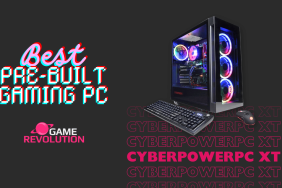My game is fight!
Maybe I’m not the smartest kid on my block, or maybe I just haven’t watched enough cartoons. Or, heck, maybe I’m too old. But for whatever reason, I had a really hard time figuring out a lot of Dragon Ball Z : Budokai Tenkaichi 2. To be honest, though, I don’t think it’s me.
It’s the game, which suffers from the same disease as so many of its Japanese predecessors. The brassiere which it turns to the English shopping sack of making the sphere Z of the dragon at times little feeling. You know what I mean? No? What, you didn’t understand me? Perhaps that’s because I took what I meant to say and translated into Japanese, then back into English. What I really meant to say was that the English in Budokai Tenkaichi 2 makes less sense than a bra that turns into a shopping bag. Now you understand, right? Right?
[image1]Now, I’ve gotten used to anguished English in my video games. If the dialogue in the story line is a little quirky, I’m willing to forgive. But in a game with a complex control system like this, instructions that feature strangely constructed English and unexplained terms can render certain moves impossible to understand. This bewilderment spills over into other areas of the game, as well.
For instance, winning fights gives you experience points, but nowhere does it tell you how many points you need to go up a level. You also win items, which you can fuse together, combining them to create more potent power-ups. It took forever to figure out how to do that, only to discover that nothing I had won actually combined to make anything.
To its credit, Budokai Tenkaichi 2 is confusing in part because it is complex and ambitious. The game offers half a dozen different modes for honing your skills, fighting in tournaments, dueling your friends, and so on. The fighting techniques alone could fill an encylopedia. You can punch, kick, throw, teleport, dash, ki blast, release three different kinds of blast attacks, knockback, transform, rush attack, smash attack, guard, taunt, etc., etc. etc.
There are a ton of moves, and it would take a serious Dragon Ball Z student to master the uses of all of them correctly. Sadly, I am not that student, and my strategy quickly turned to mastering the three or four moves that seemed to keep me from getting killed the longest, or that looked the coolest. And there are some cool looking moves. The Blast Attacks can be spectacular, and are different enough that it’s worth playing each character to see what particular brand of holy terror they can unleash upon their enemies when they’re all charged up. These super attacks range from Vegeta’s standard Explosive Wave, to the pink marshmallow-like Majin Buu’s bizarre Chocolate Beam; it turns your opponent into something resembling a gingerbread man, which you then sit on.
[image2]While the special moves are varied and different and awesome, the annoying thing is that it doesn’t really matter which character you play. Not only does each character use the exact same button combos, but there doesn’t seem to be much difference in play style between one fighter and the next. I much prefer fighting games with different types of characters to fit different playing styles, like the quick yet poorly armored assassin versus the slow but virtually unstoppable behemoth. Not here. If you learn to play one character, you’ve learned them all.
And then there’s the loading screen. Ah, my friend, the loading screen. We’ve had such good times together, sitting there, staring at each other, waiting for something to happen. To me, this strange screen looks like a bunch of Tupperware containers orbiting a rapidly spinning sun, while one of the fighters stands below, clutching his wrist in pain from the carpal tunnel syndrome he undoubtedly got from trying to do some crazy combo. When the page is done loading, the Tupperwares explode, and the screen goes mercifully blank for a moment before you arrive at your destination. Just the fact that I’ve been able to describe that page in so much detail without needing to refer back to the game should show you how painfully often you’ll be looking at it.
[image3]In general, the game looks good. The characters are drawn as they look in the original cartoon series, which gives them a two-dimensional feel, contrasting nicely with the 3D rendered backgrounds. It sounds odd, but it’s nice how well the characters stand out against the landscape, making it easy to spot your opponent from a distance. The maps themselves are decent, containing fun features like buildings to smash, trees to uproot, and oceans to plunge your adversary into. The music works, ranging from jazzy upbeat numbers to rocking techno beats as you and your rivals pummel each other into oblivion. The sound fits the game well, and the voice actors do the best they can with the stilted dialogue they’ve been given.
At the end of the day, Dragon Ball Z: Budokai Tenkaichi 2 is a solid fighting game with some cool looking features. But unless you’re willing to dedicate a significant chunk of your life to understanding and mastering it, you’re likely to get bored fairly quickly. Therefore turning to selling the plastic container of explosiveness for enjoying you make be bored. Er, I mean, so bored that you’ll turn to selling explosive plastic containers for fun.
-
Looks good
-
Awesome moves
-
Confusing instructions
-
Characters all play the same
-
Loading screen of doom







